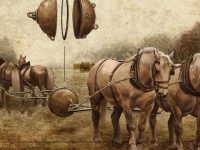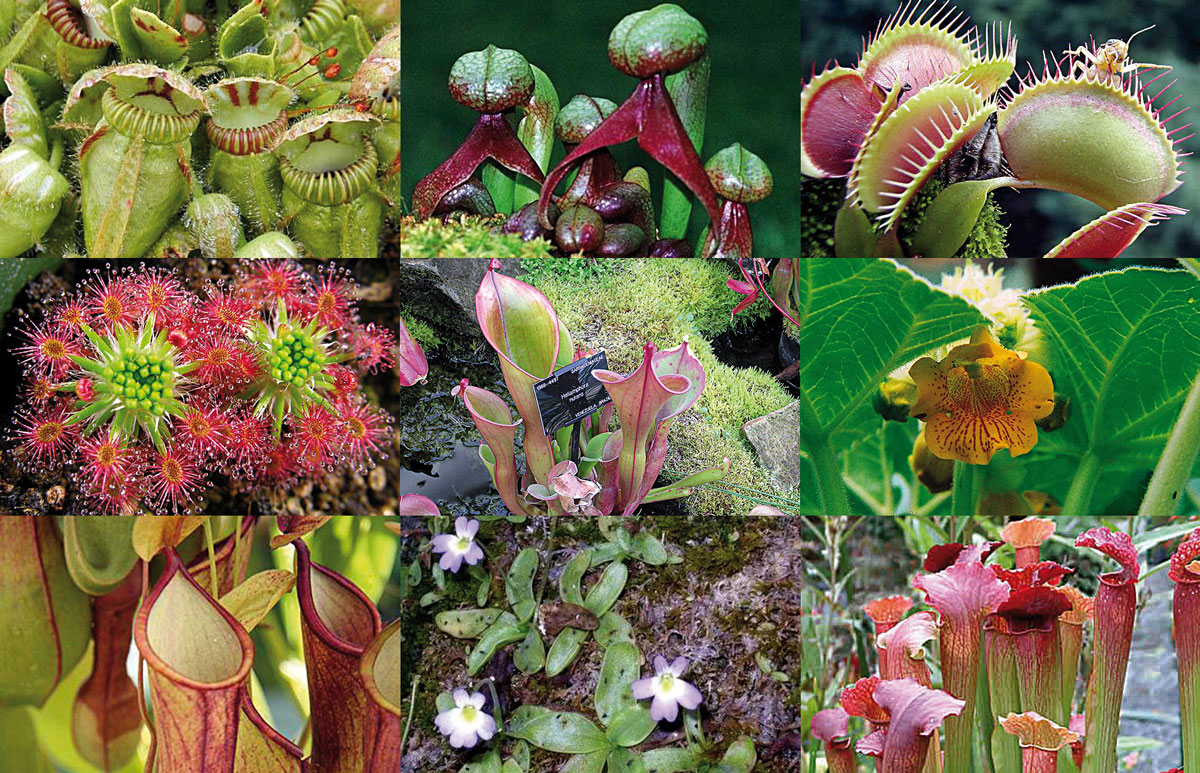
With a mere mention to carnivorous plants, our imagination is roused. There are a huge number of shapes, corresponding to eleven families, eighteen genera and 671 species. Utricularia, Nepenther and Drosera are the ones with the largest number of species, with more than one hundred per genus. They display a wide variety of colours, almost as many as shapes. There are red ones, green ones, pink ones, violet ones… Only the leaves are the carnivorous part. They can be found all around the world in all kinds of habitats –aquatic, terrestrial and epiphyte (upon another plant).
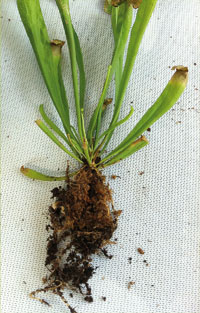
Figure A
Carnivorous plants are really fascinating. Dionaeas (Venus flytraps) come from North Carolina (USA). John Ellis, a merchant who introduced many American plants in Europe, named them after the goddess Dione, mother of Aphrodite. Later, Charles Darwin defined it as the most wonderful plant in the world and devoted a lengthy chapter of his volume about carnivorous plants, because his children enjoyed them so much.
For those of you with some gardening experience, we suggest an unusual activity to create a garden or a small collection, or just for the pleasure of growing carnivorous plants. As with any other cultivation, it can be done starting with seeds; it is easy to find them online. But in this case, we suggest an extra step: cultivate them from cuttings or multiply them through division of plants. It is a challenge to keep any carnivorous plant alive, so we will give you some guidelines not just to take good care of them but also to create your own garden or collection.
ACTIVITY: A CARNIVOROUS GARDEN
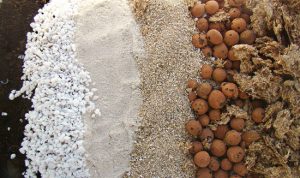
Figure B
For the activity, we will use the most easily found genera and combine them to create a garden: Sarracenia, Darlingtonia, Heliamphora, Drosera, Dionaea, Utricularia, Pinguicula, Nepenthes, Cephalotus, Byblis and Ibicella.
Methodology for multiplication by division:
1 Prepare from the pot of a dionaea or sarracenia. We will start with these two really showy genera. To do it, we have to extract the plant carefully and place it in a protected surface (figure A).
2 Clean the plant of dirt until you can see the roots. The operation can be easier pouring some water on it to remove the soil.
3 Separate small pieces of the plant keeping their roots.
4 Prepare the substrate with a part of sphagnum, peat and perlite or any of the substrates we have recommended previously (figure B).
5 Prepare the pot with drainage at the bottom, using rocks or expanded clay.
6 Fill it halfway with substrate.
7 Place the plant section and fill the pot with the mix up to the rim (figure C).
8 Irrigate with the recommended type of water. If you have rooting hormones, add them to the water, or lightly soak the roots before introducing them in the substrate. After a few days you will see the evolution.
You can now create your garden and place the pots you bought. The new specimens will serve as replacements for the garden. We can get new specimens from each one, separating cuttings or multiplying them by division.
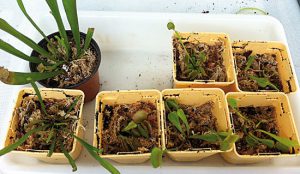
Figure C
BASIC GUIDELINES FOR THE CARE OF CARNIVOROUS PLANTS
Light. In spring and summer they like direct sunlight. They can live on the outside if the temperature is adequate.
Water. Without lime or chlorine. It can be rainwater, mineral water or distilled water, with a pH from 3 to 7. They also need environmental humidity.
Soil. The most adequate substrates are sphagnum, peat, bark, perlite and sand. There are a lot of possibilities to combine and mix these substrates. Each genus can have a different composition, for instance: Nepenthes, with any combination; Cephalotus, with sphagnum and peat; Darlingtonia, peat and sand; Dionaea and Sarracenia, sphagnum and sand; Utricularia and Pinguicula, sand, bark and sphagnum.
Container. In white or transparent pots so they do not accumulate too much heat, and with good drainage.
Latency. Dionaea, Darlingtonia, Sarracenia and some species of Drosera, Pinguicula and Utricularia experience stages of latency during the coldest periods. If the substrates are ventilated, they can last until temperature and light are adequate again.
Temperature. It may be cool. Some species even prefer winter temperatures, although we need to be careful with frost.
References
Carow, T., 2011. Plantas carnívoras. Susaeta. Madrid.
Catalano, M., 2009. Growing Carnivores: An Italian Perspective. Wow. Prague.
Darwin, Ch., 2008. Plantas carnívoras. Laetoli. Navarre.


